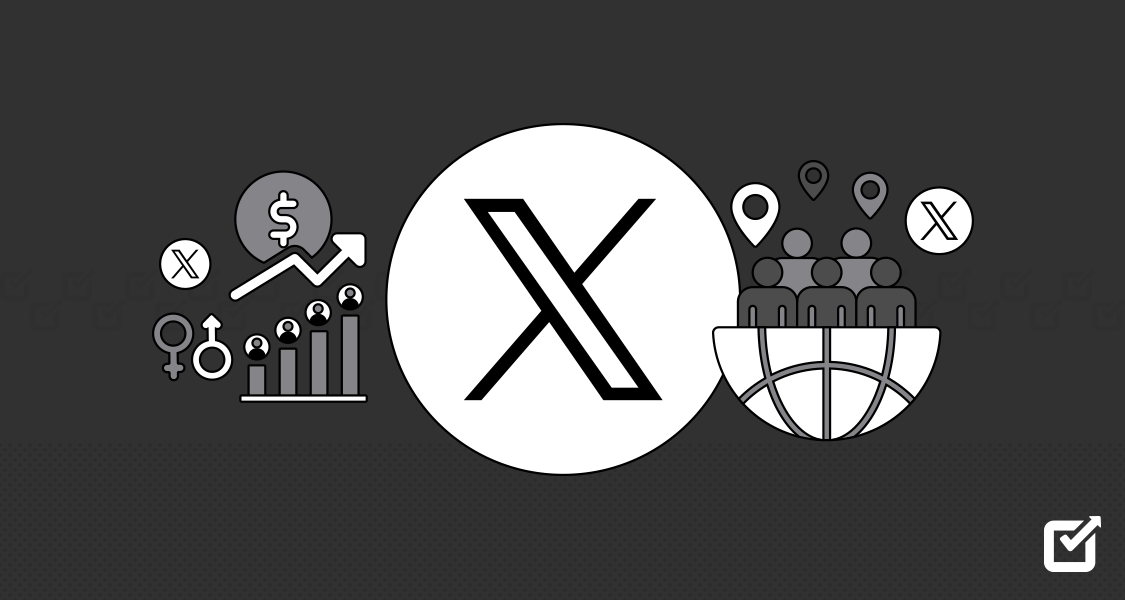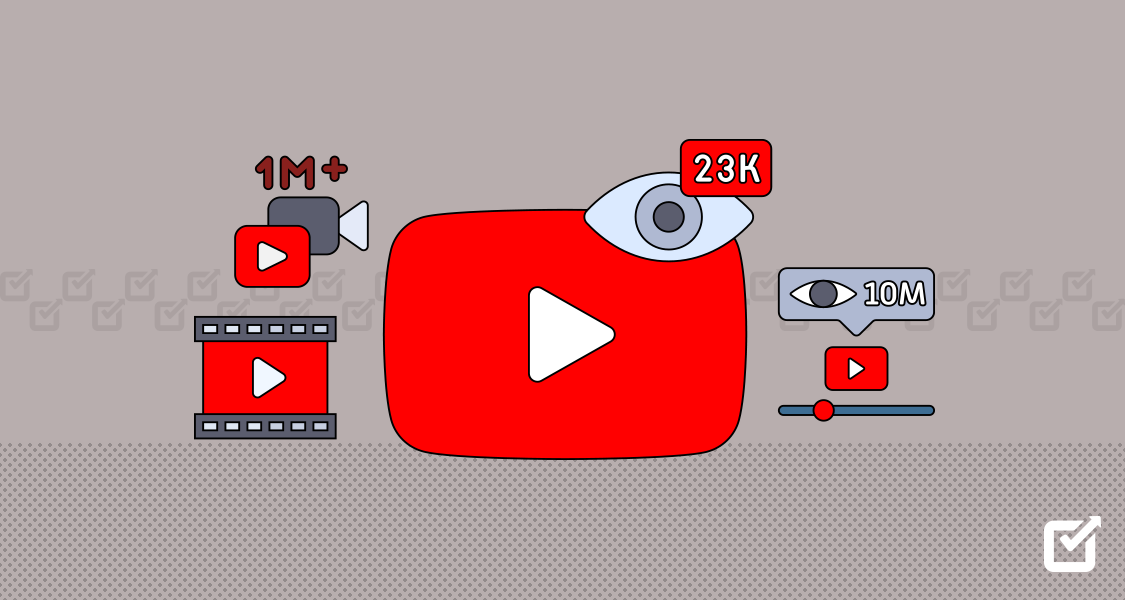Curious who you’re connecting with on Twitter these days? We’re about to pull back the curtain on Twitter’s user base in 2024. We’ll be elaborating on demographics like age, location, and other insights crucial for marketers targeting the right audience.
So, with this guide, you can sharpen your Twitter marketing skills and prepare to discover Twitter’s who, what, and where. And if your target demographic is on Twitter, you can leverage a Twitter scheduler to streamline your marketing efforts, analyze your success, and continuously improve.
Why Are Twitter Demographics Stats of Creators and Users Important?
Like building a solid house starts with a good foundation, a successful marketing campaign starts with knowing your audience.
Twitter can provide us with a lot of information about its users. It tells us things like how old they are, where they live, what they like, and more. This isn’t just random information—it’s really important for people who want to market their products or services.
The more you know about your audience, the better your marketing can be. You can frame your message to be so specific that each user feels like it’s just for them.
For example, if you’re selling something perfect for teenagers, you don’t want to spend time and money creating ads for middle-aged people, right? Knowing who uses Twitter helps you focus your marketing on the people who most likely want what you’re selling.
Also, knowing who your audience is can help you talk to them in a way that makes sense to them. For example, if your audience is millennials, you might use more casual or modern language in your tweets.
In short:
- Twitter demographics help you personalize your content and make it more relatable to your audience.
- You can optimize your posting time to reach your audience when they’re most active.
- Creating your ads based on demographics can lead to a significantly higher ROI.
- They provide insights into your audience’s interests and behaviors, which can shape your overall marketing strategy.
Streamline Your Twitter Workflow Today!
Simplify your social media strategy with our all-in-one Twitter management solution.
How to Understand the Twitter Demographics of Your Target Audience?
Numbers and data can provide some information, but the details help you understand your audience. Market research, watching how people interact with your posts, and paying attention to trending conversations can give you a full picture of your audience. Let’s take a look at a few platforms that can help you understand your demographics on X.
Twitter Analytics
This is like a report card for your Twitter account that you can look at on the internet or phone app. The ‘Audience’ section provides details about your followers, like what they are interested in, what language they speak, and their habits.
Twitter Ads Platform
Even if you’re not putting up ads on Twitter, this platform has lots of useful information. It gives you a detailed breakdown of your audience, and you can sort it by things like where they live, what devices they use, and more.
Third-Party Tools
Other third-party tools, like Social Champ, can help you analyze your audience data. These tools give you a more detailed analysis and can help you make better social media strategies.
Analytical Features of Social Champ for Twitter

- Engagement Analysis: Social Champ allows you to track your engagement metrics on Twitter, including likes, retweets, mentions, and replies. Understanding these metrics can help you gauge the effectiveness of your content and strategy.
- Follower Growth: It is crucial to analyze your follower growth over time. Social Champ provides insights into how your follower base expands or contracts, helping you adjust your strategy accordingly.
- Best Posting Times: Social Champ analyzes your tweet performance and uses AI to help identify the best times to post. This is based on when your audience is most active and engaged, optimizing your tweet visibility.
- Content Performance: Understanding which types of content (images, videos, text tweets) perform best on your Twitter account can help you tailor your content strategy to your audience’s preferences. With Social Champ, you can check out and compare your top-performing tweets.
- Reports and Dashboards: The tool comes with a comprehensive dashboard that summarizes all these analytics into easy-to-understand reports that can help you make informed decisions about your Twitter strategy.

A snapshot of Social Champ’s tweet analysis
Related Article: Boost Your Twitter Presence: Learn How to Schedule Tweets Like a Pro
How to Analyze Twitter Demographics
Understanding Twitter user information isn’t just about looking at numbers; it’s about understanding what these numbers mean. Here’s how you can do it:
- Age and Gender Patterns
The ‘Audience’ section in Twitter Analytics shows you the age and gender of your followers. You can compare these details with who you want your audience to be. For example, if your product is used mainly by women aged 25-34, but most of your Twitter followers are men in their 40s, you will need to change your content strategy.
- Location & Language Preferences
Knowing where your followers live can help you decide what topics to discuss, what language to use, and when to post your tweets. For example, if many of your followers live in a different time zone, you might want to schedule your tweets for when they’re most likely to see them.
- Interests and Habits Twitter
Analytics can also tell you what your followers are interested in and what they like to do. This can help you ensure that your tweets are interesting to them.
Related Article: 10 Twitter Automation Tools & Bots That You Need to Try in 2025
How to Use Demographic Data For Content Strategy
Now that you know more about your Twitter followers, it’s time to use this information to plan your content. Here are some strategies to get more people to see and interact with your posts:
- Customizing Topics
Knowing your followers’ interests can help you decide what topics to tweet about. For example, if your followers are really into technology, you could tweet about new gadgets. If they love indie music, you could share stuff from new artists.
- Using Analytics for Timing
Find out when your followers are most active on Twitter. Tweets sent at these times are more likely to be seen and interacted with. But don’t just stick to these moments only; try posting at different times to keep things interesting.
- Planning Advertising Campaigns
Information about your followers can help you create better ad campaigns that will appeal to specific groups of them. Use this information to determine what type of content these groups might like and when they will most likely be online.

25+ Twitter Demographics Stats That Every Brand Must Know
Here are some Twitter user statistics:
General Stats
Twitter Has Over 330 Million Active Users Every Month. Twitter’s user base is huge and diverse, with more than 330 million people using it every month. It’s not just for young people or those who are outspoken. It’s a platform where a wide range of people interact and engage.
Twitter Demographics Age
- 38% of Twitter users are between 18 and 29 years old. Contrary to popular belief, Twitter is for more than just the very young. A substantial number of its users are from Gen Z and younger millennials. These users often lead trends and embrace new online and cultural happenings.
- 26% of Twitter users are between 30 and 49 years old. Twitter also has many middle-aged users, proving that it’s not just a fleeting trend. It’s a platform that appeals to a broad age range.
- The largest age group of Twitter users worldwide is between 25 and 34 years old. This key group of users often has extra money to spend, making them an attractive target for brands that can grab their attention.
- 63% of Twitter users worldwide are under 35 years old. Most users are millennials or Gen Z, proving that Twitter is a favorite platform for younger tech-savvy people.
- 80% of Twitter users are affluent millennials. This age group is known for its spending power and receptiveness to branded content, influencer marketing, and authentic engagement.
Twitter Location Demographics by Country
- Most Twitter users are in the US, but it’s used globally in over 68 countries. Twitter isn’t just an American phenomenon—it’s a global one. Understanding the geographical spread of your target audience can help you tailor your content and engagement strategies to meet their cultural, linguistic, and contextual needs.
- Twitter is available in over 40 languages. This wide range of languages shows that Twitter is dedicated to welcoming users from around the world.
- 83% of world leaders are on Twitter. If your brand is involved in the political sphere, either as an observer or an active participant, then Twitter is the place to be – it’s where the world’s leaders communicate.
- Twitter is the #1 platform for government leaders. From local councilors to international heads of state, Twitter has become the de facto communication channel for the political class, again underscoring the platform’s importance in a global context.
Twitter Audience Demographics
Let’s break down who’s using Twitter and why it’s so popular:
- Twitter is used mainly by younger people, especially those aged 18 to 34, with the largest group being 25 to 34-year-olds. They use Twitter for news, entertainment, and connecting with others.
- More males use Twitter than females, making up around 74.3% of the audience targeted by Twitter ads.
- Twitter has a significant presence worldwide, with the most active users in the United States, Japan, and India. This shows its importance in international conversations and highlights diverse interests and cultures.
- In the U.S., many Twitter users aged 18 to 49 lean toward the Democratic Party, which affects the political discussions on the platform.
- Twitter tends to attract users with higher education levels, suggesting that its audience is well-informed and interested in educational topics.
- Users on Twitter often come from higher income brackets, indicating their economic influence and potential purchasing power.
Twitter Demographics: Gender
- The gender split on Twitter is roughly even: 68 million American men and 62 million American women. There’s almost an equal distribution of men and women on Twitter in the United States, which means your brand needs to meet the interests of both these segments to be genuinely inclusive and extensive in its outreach.
- 66% of all Twitter users are male. The data is slightly skewed towards a male-dominated user base, which might influence the type of content that performs best on the platform.
- 34% of Twitter users are females. While the ratio is more men to women, the number of female users is still quite significant, indicating that a noteworthy portion of your marketing strategies should resonate with the female audience.
Twitter Follower Demographics
- Twitter users have a wide range of interests and jobs. This diversity supports Twitter’s ‘newsy’ nature, with users expressing interests in a myriad of subjects, professional industries, and hobbies.
- The most followed accounts are usually individuals, celebrities, brands, and organizations. Influencers have a significant role here, showcasing the power of personal branding – something that brands can leverage through strategic partnerships and endorsements.
- 79% of Twitter users like to discover what’s new, making it the top platform for discovery. This stat is crucial for brands looking to expand their Twitter presence, introduce new products, or capitalize on emerging trends.
- The average session on Twitter lasts 3.39 minutes. This suggests a platform where users quickly check in for updates, news, or quick interaction, signaling content should be easily digestible and engaging.
- 42% of Twitter users use it daily. While not the most daily-used social platform, 42% of users regularly use it, which presents a significant opportunity for brands to stay top-of-mind with a consistent presence and engagement strategy.
- 84% of Twitter users use it to look for news. They’re here to be informed. Brands that blend promotional content with value-driven news and updates can effectively engage their audience on Twitter.
Related Article: 10 Meaningful Ways to Get More Twitter Followers in 2025
Twitter Demographics Analytics
- 77% of Twitter users feel more positive about a brand when their tweet is replied to. This speaks volumes about the impact of customer service and timely engagement on customer satisfaction and brand perception on Twitter.
- 93% of Twitter community members are open to brands getting involved if done so in the right way. This high level of openness presents an open door for smart and engaging brand interactions, provided they are authentic, relevant, and add value to the user’s experience.
- 40% of Twitter users reported purchasing something after seeing it on Twitter. When people shop online, the website or app they use can affect what they decide to buy, especially for those who like to find good deals and do some research before making a purchase.
- 75% of B2B businesses market on Twitter. Twitter is not just for consumer brands—B2B opportunities flourish here, too, with a professional, engaged, and ready-for-business audience.
- 46% of Twitter users will visit the sites tweeted by brands. This high conversion rate highlights Twitter users’ active, conscious behavior, making a click even more valuable here than on other platforms.
- Over 50% of Twitter users follow brands and companies. They’re already wanting to hear from brands. Now, it’s about how well you can captivate and retain their attention with a mix of compelling content and interaction.
Achieve Twitter Success with Smart Scheduling!
Say goodbye to guesswork and hello to strategic posting! Our smart scheduling features ensure your tweets hit the mark every time.
To do well on Twitter, knowing who uses Twitter and what they like is essential. This means looking closely at the numbers that tell us about the people on Twitter – like how old they are, whether they’re mostly men or women, and what they’re interested in. If you’re smart and creative with this information, you can make your brand or message stand out and connect with lots of people on Twitter. It’s all about using these facts to help you do better and reach more people who might like what you have to say or sell.
Summing Up
Understanding Twitter demographics in 2024 is essential for people wanting to advertise effectively. Many Twitter users are young adults, particularly those between 25 to 34 years old, and many are well-educated and earn a good income.
This makes Twitter a great place for ads aimed at people who like finding deals online and are comfortable using the internet for various activities.
Understanding the mix of men and women on Twitter, their political views, and how the platform reaches different age groups helps marketers create ads that speak to Twitter’s audience.
By paying attention to these details, advertisers can make ads that are more likely to grab the attention of the right people at just the right time on Twitter, one of the busiest places on the internet in 2024.


















